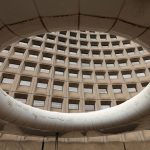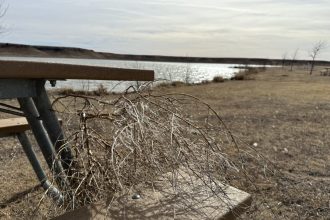When thinking of California, we instantly imagine San Francisco’s Golden Gate Bridge, Silicon Valley’s advanced technology, and the star-studded city of Hollywood. But the experienced traveler is well aware that the most popular destinations often overshadow hidden locations worth venturing into. Tucked in Madera County, five miles northwest of Oakhurst, Wassama Round House State Historic Park is California’s historic conservation area, still viewed as a sacred place by Native Americans, the Southern Sierra Miwok people. Nestled in the Sierra Nevada foothills near Ahwahnee, the park remains an Indigenous ceremonial site that tourists can visit today.
Nowadays, descendants of those who survived keep their traditions alive, and California’s Wassama Round House State Historic Park serves as a means to educate and inspire both visitors and residents, as well as to preserve an ancestral culture. An annual celebration that is practiced today is the Gathering Day, taking place on the third Saturday of October. The public is welcome to witness this timeless commemoration featuring traditional dances and a handicrafts showcase. This event is a unique experience to demonstrate the artistic talent of the Native peoples’ descendants and highlight both the cultural and spiritual value of their traditional dance. Some of these ceremonies served a religious purpose; therefore, a designated attire was worn, such as feather headdresses and elaborate garments, while others were meant for entertainment. The Miwok practiced the Grizzly Bear Ceremony, where the dancer mimicked a bear, wearing obsidian on his fingers as if they were claws. Some other dances, instead, were performed by figures named “Wo’ochi”, who were coated in white paint and represented coyotes.
Read more: The 5 Best Hidden Hot Spring Hikes In California
Native Americans living in Wassama village
Miwok woman holding a basket – Heritage Images/Getty Images
The first Native peoples inhabited this county around 8,000 years ago. At the beginning of the 1700s, the Miwok people were the main residents, living on hunting, fishing, and corn cultivation, and using tools that nature provided them. Unfortunately, due to the gold rush and the discovery of new lands, their peaceful lifestyle was soon hindered. With the arrival of new settlers, the Miwok were forced to abandon their land, and many died because of disease and killing. By 1905, fewer than 700 Native Americans lived in the region.
Today, Wassama Round House State Historic Park stretches across an oak savanna dotted with Valley Oak trees, hemmed in by a rail fence, with rustic properties located just outside its border. The name of the village, Wassama, means “falling leaves” in the Miwok language and dates back to before the 1860s. The park’s main and most notable feature is the circular dwelling. Before the 1860s, there was more than one roundhouse in the park, but the first two were burned down as a tribute to their leader when he died. These houses were a partially underground structure used by Native Americans for harvest, dance rituals, and traditional games. In 1903, the third building was built — a 40-foot diameter roundhouse called “hangi” — using material from the previous ones and officially restored by Chief Peter Westfall, along with other townspeople. When Westfall died, the house was not destroyed. It was preserved by the state park and is still used today for solemn purposes.
How to plan your visit to Wassama Round House State Historic Park

Sign at the entrance of Wassama Round House – cdn.prod.website-files.com
Wassama Round House State Historic Park is free to visit. It’s open year-round and you are warmly invited to explore the area; however, there are a few guidelines to follow: You’re not allowed to take photos inside the roundhouse, you cannot walk on the millstones, and you need to pick up your garbage, keep your pet on a leash, and clean up after them. While visitors can attend the annual Gathering Day, other private ceremonies are exclusive to the Indigenous people.
If you’re wondering how to reach the state park, your best bet is to fly into Fresno Yosemite International Airport, which is about 55 miles from the nature reserve. Once on the road, drive along Highway 49 until you reach Ahwahnee. There’s a parking area and a restroom, but be advised that the round house does not offer wheelchair access. If you are based in Sacramento — the Californian town nicknamed “America’s farm-to-fork capital” — the drive takes around three hours; travel time is about the same if you start from San Jose, located half an hour from California’s wealthiest suburb in 2025.
The state park also provides an ideal outdoor day out, where you can walk or rest around its 27-acre green space. If you prefer hiking, take a look at Wassama Round House Trail. It’s a short, easy, family-friendly path that takes only two minutes to complete. Camping is not allowed in the park, but there are nearby options available for you to choose from. Alternatively, you can embark on an adventurous road trip to explore every national park in California, potentially starting from Yosemite National Park, located less than 22 miles from Wassama Round House State Historic Park.
Ready to discover more hidden gems and expert travel tips? Subscribe to our free newsletter for access to the world’s best-kept travel secrets.
Read the original article on Islands.









